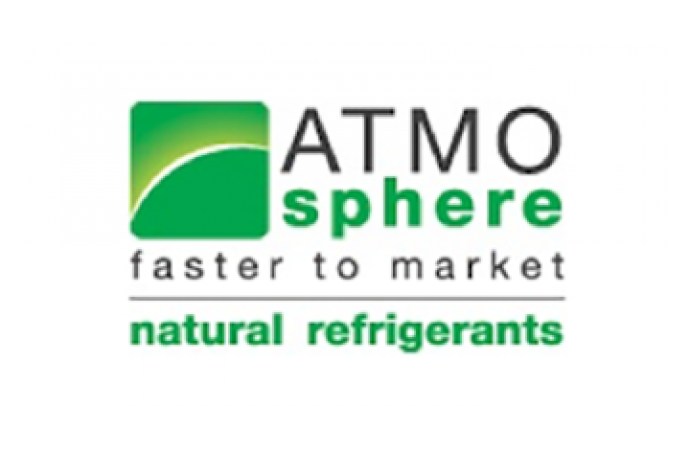Part 2 of ammonia21.com’s reporting on the NH3 presentations at ATMOsphere America 2014 looks at the case studies submitted by Vacom Technologies, Los Angeles Cold Storage Company and CIMCO, who each presented energy saving refrigeration solutions for warehouses, together with Emerson Climate Technologies, who presented an ammonia heat pump installation using their single screw compressor.

The North American refrigerated warehouse industry has grown significantly in the past decade, resulting in an increased demand for innovative ammonia refrigeration systems with increased energy efficiency and reduced charges. The case studies below showcase some of the benefits of this new technology. In addition ammonia heat pumps can be used to capture waste heat produced by refrigeration systems to generate useful heat for end-users.
Cascade CO2/NH3 tops R507 in terms of energy performance
In his ATMOsphere America 2014 presentation Brian Dobbs, Sr. Energy Engineer at VaCom Technologies compared the performance of an existing CO2/NH3 cascade system at a refrigerated warehouse in Fresno, California with a theoretical conventional NH3 system and a theoretical conventional R507 system, from a real-time energy consumption and refrigeration capacity standpoint. The refrigeration system, installed in a 150,000 ft2 (13,935m2) warehouse, provides cooling at four separate pressure levels for: blast freezers (CO2 -58°F/ -50°C), holding freezers (CO2 -20°F/-28°C.8), coolers and docks (CO2 +20°F/-6°C) and high side (NH3 +11°F/ 11°C).
The comparative analysis, performed on the basis of power per unit of cooling produced during 2-minute intervals, showed that the CO2/NH3 cascade system results in:
- A higher energy efficiency due to the system configuration and the thermodynamic properties of the refrigerant
- A lower refrigerant charge
- Positive pressure in all system areas avoiding system contamination
- The potential to lower blast freezer temperatures
- A reduction in the TEWI (total equivalent warming impact) of almost 67%
Switching from Freon to ammonia increases savings
Benoit Rodier, Director of Business Development at CIMCO Refrigeration, highlighted the advantages of an ammonia installation used to replace an Freon refrigeration system destroyed by fire at Viandes Meats, a 30,000 ft2 (12,356m2) facility providing frozen products for restaurants and hotels. The replacement NH3 installation, which has a capacity of 2,500,000 kW/hr, and provides 1327 kW of heat, is comprised of:
- 1 spiral freezer at -40°C (-40°F)
- 5 blast freezers from -40°C to -23.3°C (-40 F to -10 F)
- 1 freezer at -23.3°C (-10°F)
- 24 medium temperature rooms from 2.22°C to 10°C (36°F to 50°F)
- 4 hygienic preparation rooms at 2.22°C (36°F)
The installation received a $500,000 grant from Hydro Quebec, and saves:
- 260 kW of hot water heating
- 1200 kW of electric heat
- 62 kW of air conditioning
- 200 kW of refrigeration system
Very low ammonia charge
John S. Scherer, Manager of Engineering at the Los Angeles Cold Storage Company, presented the NXTCOLDTM Technology for ammonia refrigeration, which is suitable for warehouse storage. NXTCOLDTM requires less that 100 pounds (45.36kg) of ammonia per refrigeration system and features an electronic refrigerant injection control (ERIC).
Industrial ammonia heat pump saves $435,600 (€320,000)
Sam Gladis, Business Director-Heat Pumps, Emerson Climate Technologies presented a case study of an ammonia based heat pump installation in a cheese processing facility, “PIZZA TOPPING”, which converts 12 million lbs (5.4 million kg) of milk to cheese. The installed ammonia refrigeration system has the following characteristics:
- Compressor load of 14,176 tons
- Condensing capacity of 13,319 tons
In the summer period the processing plant suffers from a shortfall in condensing capacity, which results in an increase in head pressure from 145 psig to 170 psig. In addition the facility is subject to cap and trade costs and water costs. The Emerson ammonia heat pump installation is able to offset some of this burden.
The configuration of the installation enables the heat pump to act parallel as a condenser, and to replicate the heating capacity of one the four steam boilers.
The heat pump installation’s key advantages, as summarised by Gladis are as follows:
- 581,000 therms fossil fuel savings
- 1.27MWh electric savings
- 100 HP boiler fan power savings
- More than 49 million litres water consumption savings
- Almost 25 million waste water savings and an increase in heating efficiency COP from 0.75 to 5.08.
In financial terms, the Emerson ammonia heat pump project resulted in approximately €320,000 ($435,600) overall utility cost savings and €37,500 ($51,000) cap and trade savings, received a €520,000 EUR ($707,000) utility incentive, and had a 2.45-year simple payback.
MORE INFORMATION
Related stories





